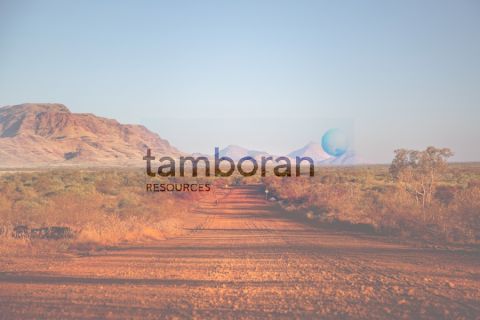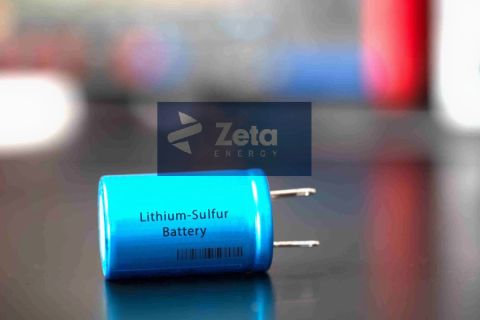The Cook Inlet Basin, Alaska's oldest and most mature producing area, is enjoying a burst of new activity. Several companies have stepped up their exploration and exploitation efforts, aiming to participate in an improving local natural gas market. For the last quarter-century, Cook Inlet was choked with gas. Large fields and low prices provided little incentive for companies to seek gas deposits. Now, however, declining production from the inlet's old fields portends future supply shortfalls. At an average yearly consumption of 215 billion cubic feet (Bcf), the overhang has shrunk to a remaining supply of just over 10 years. Happily, prices are firming as well. For many years, natural gas only fetched about 25 cents per thousand cubic feet in this part of Alaska. That's changed, as recent producer contracts with utility Enstar Natural Gas Co. tie local gas to Henry Hub prices, with no basis differential. Furthermore, the Cook Inlet Basin still looks good to prospectors. Some 85% of the gas that has been discovered lies in just four fields, each containing ultimate reserves of more than 1 trillion cubic feet (Tcf) of gas. Four additional fields carry reserves of 100- to 250 Bcf. Only a handful of the fields yet found are in the 50- to 100-Bcf range, and industry holds the opinion that many more of the smaller fields await the drillbit. Even oil prospectors are enthusiastic. Of the 1.3 billion barrels of oil that have been discovered in the inlet, less than 200 million barrels remain to be produced. Several firms believe that if they apply the current generation of exploration technologies to the inlet, they will uncover bypassed or subtle plays that previously escaped detection. Still prospective Certainly, the biggest news during the past several years has been Forest Oil's discovery and development of Redoubt Shoal, a multi-million-barrel oil field that lies in the heart of Cook Inlet. The Denver-based independent drilled its first well in the prospect in 2001, testing 1,010 barrels of oil per day from the Hemlock formation at its #1 Redoubt. Forest also tested 8 million cubic feet of gas per day from one of its appraisal wells, meaning the field could also hold significant gas reserves. Currently, the firm estimates the field contains 200- to 300 million barrels of oil in place. Given the historical recovery factors in Cook Inlet waterfloods of between 25% and 42%, recoverable reserves are between 50- and 125 million barrels. The project is a classic case of the success of 3-D seismic imaging in old, complexly faulted areas. PanAmerican, the predecessor of Amoco, drilled the initial well on the prospect in the 1960s. Although the wildcat tested 1,300 barrels of oil per day, the discovery was deemed too small to be developed. Several additional tests probed the prospect in subsequent years, but these were all dry. A clear picture of the structure wasn't obtained until a high-quality, 73-square-mile 3-D survey was shot in the late 1990s by Forcenergy Inc., a Florida-based independent that was merged into Forest in 2000. Last December, Forest started production from its Osprey Platform, making Redoubt Shoal the first new offshore oil field to be brought on production in the inlet in more than 30 years. The company has averaged production of around 3,000 barrels of oil per day from its first two wells. At press time, Forest expected to soon add another two wells, then to add a well each quarter for the balance of the year. "We're currently drilling the sixth well at Redoubt Shoal, out of a total of 28 wells that we have to drill," says Michael Kennedy, senior financial analyst. At its peak, Redoubt Shoal is estimated to be able to pump 15,000 barrels of oil per day. The firm's 2003 capital budget is set at $316 million, of which some 20% will be devoted to Alaska. Most of the Alaska funds are earmarked for its Redoubt Shoal development. It will drill four new oil wells there this year, and start waterflood operations next year. Farther down the road, Forest has generated nine prospects on its existing acreage-it holds 1.25 million acres in and around Cook Inlet, and is the largest acreage-holder there. Five offshore prospects contain a total unrisked reserve potential of 2.1 Tcf, and four onshore prospects add another 195 Bcf. "These prospects are for the longer-term, after we finish developing Redoubt Shoal," says Kennedy. At the same time, Unocal, the heavyweight producer and veteran operator in southern Alaska, embarked on a four-well, extended-reach and horizontal drilling program in McArthur River, one of the inlet's oldest fields. In 2001, the company drilled its #K-13 well off its King Salmon platform. That well pumped at a peak rate of 8,552 barrels of oil per day from the Hemlock, the highest production rate yet recorded for a Cook Inlet well. The producer tested a structure in the northern portion of the field, which could contain more than 35 million barrels of oil. A second well pumped 1,100 barrels of oil per day from the "G" zone. Unocal owns a 56% interest in McArthur River's Hemlock zone and a 49% interest in the "G" zone; Forest Oil is enjoying this bounty as well, as it holds the remaining interests. Unocal credits the use of advanced drilling and analytical technologies for its success in turning the King Salmon platform from a marginally economic operation to a prolific producer. In 2001, the company averaged net production from the inlet of 103 million cubic feet of gas and 12,750 barrels of liquids per day. It continues on a work program of drilling new wells, converting wells from injectors to producers and vice versa, redrilling existing wells, and installing submersible pumps. XTO Energy Inc. is another operator with a presence in the inlet. The Fort Worth-based firm entered Alaska in 1998 when it purchased interests in Middle Ground Shoal Field from Shell. Since the 1960s, that field has produced more than 120 million barrels of oil. In the fourth quarter of 2002, XTO produced 4,100 barrels per day gross from Alaska. The company's recent efforts have focused on the west flank of Middle Ground Shoal, where it has drilled eight horizontal/high angle sidetracks that resulted in average initial potentials of 400 barrels of oil per day and average per-well reserves of 750,000 barrels. It has also converted three wells to injectors, and completed a field simulation study. Currently, XTO is also drilling a horizontal well on the field's east flank to test some unswept portions. After that well is complete, it will drill three new wells on the west flank, at a cost of $4- to $5 million apiece. ConocoPhillips has enjoyed success as well. Both the Tyonek and Hemlock zones yielded oil during flow tests of its #1 Hansen on its Cosmopolitan prospect. That 18,360-foot well is in the Cosmopolitan Unit, located on the east side of the Inlet, adjacent to Anchor Point. This year, the company will drill a second test on the project. Forest, a 25% partner in the Cosmopolitan venture, has said that the find appears to contain in excess of 200 million barrels of in-place oil. A new face in the picture is Prodigy Alaska LLC, an Irving, Texas-based outfit that plans to drill a well just south of ConocoPhillips' North Cook Inlet Unit. The company has a 9,683-acre prospect called Northern Lights, which it acquired in the 2001 Cook Inlet state lease sale. It hopes to drill its first well sometime this year, targeting the Tyonek Deep formation. Efforts on the Kenai Both majors and independents are actively exploring for conventional natural gas on the Kenai Peninsula, which abuts Cook Inlet to the east. Small gas fields are sprinkled across the peninsula, which also is home to the 2.3-Tcf Kenai Field, the largest gas accumulation in the basin. Unocal, ConocoPhillips and Marathon Oil Co. all hold onshore interests. The latter two firms own an LNG plant that receives its feedstock from North Cook Inlet Field. The plant, which has a capacity of 1.5 million tons per year, has been operating for the past 40 years. Recently, Marathon started producing gas from Wolf Lake Field, the first gas discovery to be brought onstream in the Cook Inlet area since 1979. The field, which was discovered in 1998, lies in the Kenai National Wildlife Refuge, about 12 miles northeast of Soldotna. The initial producing rate was 3 million cubic feet of gas per day; the field is thought to hold about 50 Bcf in recoverable reserves. A focus area for Marathon has been the Ninilchik Anticline, a structural feature that stretches for 16 miles along the coast of the Kenai Peninsula. Since the 1960s, a number of wells had been drilled on the feature, and gas had been tested from the Miocene Tyonek formation. Along with its partner Unocal, Marathon drilled the #1 Grassim Oskolkoff in early 2002. The 11,600-foot well tested 11.2 million cubic feet of gas from a 39-foot interval in the Miocene at 9,822 feet. The partners followed that with the #2 Grassim Oskolkoff, which tested at a rate of 11.9 million cubic feet per day from three intervals, and the #1 RD Falls Creek, which flowed 6.8 million per day from one zone. Marathon says that the structure contains gross gas reserves of 90 Bcf. Interests in the 25,167-acre Ninilchik Unit are owned 60% by Marathon and 40% by Unocal. The companies have started construction on a 33-mile pipeline that will connect the Ninilchik area to the grid near Kenai. The 12-inch open-access line will generally follow the Sterling Highway between Kenai and Ninilchik. The cost is expected to be about $25 million. Unocal has also applied to form two units in the same area. It plans to drill a 9,200-foot exploratory well in its 9,328-acre South Ninilchik Unit, and an 11,200-foot exploratory well in its Deep Creek Unit. Unocal was not successful in a three-well program it kicked off to the south last year, however, near North Fork Field. The three tests were dry, and original plans to extend the pipeline down into the southern area were modified to the current plan. A small operator with interests in North Fork Field, on the southern end of the Kenai Peninsula, is privately held Northstar Energy Group Inc. In late 1999, the Tulsa-based firm acquired North Fork Unit, a single-well field that Unocal had discovered in 1965. "The well has never been produced," says Keith Summar, vice president. Last year, the company flow-tested the shut-in well at the rate of 4.2 million cubic feet per day from a Tyonek zone. Currently, Northstar is permitting an offset to the discovery. The primary objective for the 11,500-foot test is the Tyonek; the secondary objective is Hemlock. Northstar is also looking at building a pipeline to connect North Fork to the towns of Anchor Point and Homer, and also to the terminus of the new pipeline Marathon and Unocal have under way. "We will drill at least one well this fall," says Summar. A new face Aurora Gas LLC, a private firm based in Houston, has also joined the hunt for gas in southwestern Alaska. Since 1997, the company has both participated in lease sales and acquired properties from established operators. In early 2000, the company acquired Nicolai Creek Field on the west side of the inlet. Texaco had discovered the small, shallow gas field in the 1960s, while it was looking for oil. It drilled six wells and attempted several completions. Gas was produced for about 10 years, until 1977. After the field pressure declined to the point that compression was required, it was shut in and remained so for more than 20 years. Aurora set out to revive the dormant property. In 2001, it worked over a well, gauging a flow rate of 4 million cubic feet of gas per day from five Upper Tyonek intervals between 1,900 and 2,380 feet. It hooked that well into the local infrastructure in October 2001. In 2002, it recompleted one well and reentered and sidetracked another. Currently, it is putting in a three-mile gathering line to connect its second and third wells to the sales line, says president G. Scott Pfoff. "We are anxious to get our latest two wells online, and we expect to accomplish this by the end of the second quarter." From that beginning, the company's Alaska interests have grown rapidly. Last May, Aurora arranged a $25-million line of equity with Kaiser-Francis Oil Co. and Cosco Capital Management LLC. It then purchased ConocoPhillips' 50% interest in the onshore Moquawkie Unit, also on the west side of the inlet. That project includes the #1 Lone Creek well, drilled in late 1998 by partners Arco Alaska and Anadarko Petroleum Corp. The discovery tested 10.6 million cubic feet of gas per day from a 53-foot interval in the Upper Tyonek, at a depth of about 2,400 feet. The companies attempted a confirmation well to the south, but that test was dry and the discovery was not developed further. This January, Aurora closed on an acquisition of Anadarko's entire Cook Inlet lease-holdings, including its 50% interest in the Moquawkie Unit. In the purchase, Aurora obtained from Anadarko 20,000 net acres on the inlet's west side and 33,000 net acres on the Kenai Peninsula. The company plans a busy year. "We are currently building a six-inch, six-mile gathering line to connect the #1 Lone Creek to Marathon's Beluga Pipeline," says Pfoff. Aurora also plans to drill a north offset to the discovery. The company is also in the midst of shooting a $3-million seismic survey, the first 3-D survey on the inlet's west side. It is acquiring 12 square miles of data at Nicolai Creek, and 16 square miles on the Moquawkie Unit. "We have a wonderful acreage position. There are a lot of old wells that were drilled as oil prospects, when little attention was paid to gas. We even have a number of shut-in gas wells." The company is busily reanalyzing old logs to identify gas pay, and looking again at old test results. "We have a big basket of opportunities here to develop gas reserves and get them to market at a time when they will command some good prices," says Pfoff. Coalbed methane Alaska's foremost coalbed-methane player is now Evergreen Resources. The Denver-based firm, which specializes in CBM development, acquired the Pioneer Unit in 2001 from Unocal and Ocean Energy. Located in the Matanuska-Susitna Valley, about an hour's drive north of Anchorage, the 48,000-acre Pioneer Unit is the state's highest-profile CBM project. In September 2001, Evergreen also picked up three adjoining tracts in a state lease sale, bringing its leasehold to 70,000 acres. Only a couple of wells were drilled in the Pioneer Unit prior to Evergreen's acquisition, and these were not fracture-stimulated in the coals. To date, Evergreen has drilled eight wells in two four-well pilots on the Pioneer Unit. One pilot is about five miles northwest of Wasilla, and the other is 15 miles due west, near Houston. The wells, which vary in depth from 3,000 to 3,700 feet, have all encountered coal seams in the Tyonek; aggregate thicknesses are up to 160 feet. There are more than a dozen coals in each well; most seams are between two and four feet thick, and some reach eight feet. "Currently, we are completing a water-disposal well. Once that is done, we will begin fracture-stimulation of the first pilot wells," says John Kelso, Evergreen director of investor relations. The disposal well is directly between the two pilots. "We'll be reinjecting all of the water that we produce, and trucking it to the disposal well while we are testing." The company's target at Pioneer is to develop about 500 Bcf of recoverable gas reserves, which will be produced at daily rates of 50- to 100 million cubic feet, during a span of 20 to 30 years. Evergreen spent $6 million in Alaska in 2002; it has allocated $7- to $8 million there this year. In addition to fracture-stimulating existing wells, the company will drill another four-well pilot on its properties. Mark Sexton, president and chief executive officer, notes that the company's goal is to establish proven reserves and get production into the local line on or about the end of the year. Additionally, Evergreen is working with the Alaska state legislature and state regulatory agencies to streamline the permitting and oversight processes for shallow gas wells, rather new phenomena for Alaska. "The business climate is excellent in Alaska," says Sexton. "The state recognizes the need for additional gas supplies in the Anchorage area."
Recommended Reading
U.S. Shale-catters to IPO Australian Shale Explorer on NYSE
2024-05-04 - Tamboran Resources Corp. is majority owned by Permian wildcatter Bryan Sheffield and chaired by Haynesville and Eagle Ford discovery co-leader Dick Stoneburner.
1Q24 Dividends Declared in the Week of April 29
2024-05-03 - With earnings season in full swing, upstream and midstream companies are declaring quarterly dividends. Here is a selection of dividends announced in the past week.
Analyst Questions Kimmeridge’s Character, Ben Dell Responds
2024-05-02 - The analyst said that “they don’t seem to be particularly good actors.” Ben Dell, Kimmeridge Energy Partners managing partner, told Hart Energy that “our reputation is unparalleled.”
Tellurian Reports Driftwood LNG Progress Amid Low NatGas Production
2024-05-02 - Tellurian’s Driftwood LNG received an extension through 2029 with authorization from the Federal Energy Regulatory Commission and the U.S. Army Corps of Engineers.
Zeta Energy Appoints Michael Everett as COO
2024-05-02 - Prior to joining Zeta Energy, a lithium-sulfur battery developer, Michael Everett previously served as president and COO at Advanced Battery Concepts.





